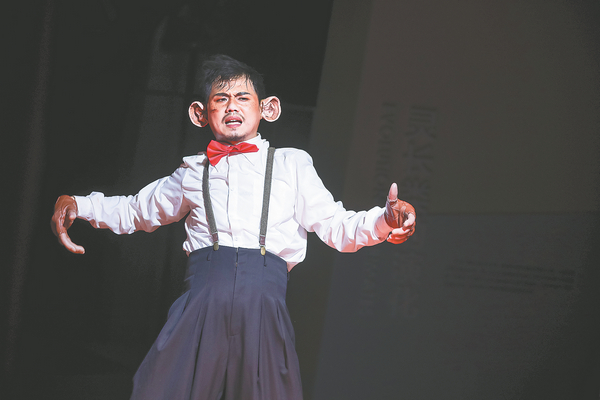

To help navigate the museum, visitors can get a passport which can be stamped at designated locations they visit, according to Jin. There are QR codes on the booklet that people can use with their phone to scan for more information about the exhibits.
"Through special events and activities, we aim to enrich the lives of the public and attract people to the museum, so they can experience its charm," Jin says.
Starting in 2006, the Night at the Museum program has received over 100,000 visits. With a collection of around 372,000 historical and modern specimens, the 23,000-square-meter National Natural History Museum of China, which dates back more than 70 years, is a popular attraction for exploring the history of life on Earth in the capital.
As well as the natural history museum, many other institutions across the country have offered after-hours activities and events this summer after the National Cultural Heritage Administration issued a notice on improving museum services on July 14.
To enable as many people as possible to experience museums in person, the notice requires popular venues to extend their opening hours and offer a variety of activities to further their educational role and mission.
According to online travel agency Ctrip, museum tours are gaining popularity among tourists. Data shows that the major consumers of products and services related to museums and galleries are from the generations born after 1980.
The most favored museums are the Palace Museum in Beijing, followed by the National Museum of China, the Shaanxi History Museum in Xi'an, Shaanxi province, the Shanghai Museum, the Emperor Qinshihuang's Mausoleum Site Museum in Xi'an and the National Natural History Museum of China, according to the latest ranking released by Ctrip.
The museum craze is evident in a report by short-video platform Douyin, in which it notes that posts related to museums were viewed more than 51.34 billion times.
Some 578 million in-person visits were made last year to the country's 6,565 registered museums, according to the latest statistics from the National Cultural Heritage Administration.
"Summer school holiday is the peak season for museums, which makes it hard to bag an entry ticket, and extending open hours can help alleviate the issue," says Wei Xiang, researcher with the National Academy of Economic Strategy affiliated with the Chinese Academy of Social Sciences.
This summer, there are 17 museums in Shanghai and more than 30 in Beijing providing after-hours activities. On every Friday until Aug 25, the Guangdong Museum in Guangzhou, Guangdong province, will be open until 8:30 pm, offering events from musical performances and specialized tours to hands-on activities.
"Beyond its cultural influence, the museum sector has the potential to improve its economic value," Wei says, adding that museums should explore innovative business models and cooperation strategies to leverage their influence in the regional culture and tourism fields.
Contact the writer at wangqian@chinadaily.com.cn